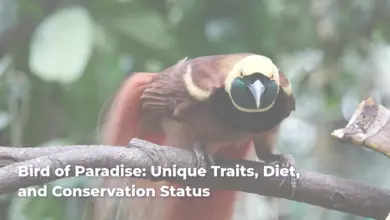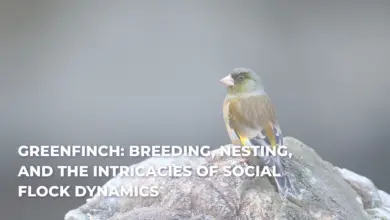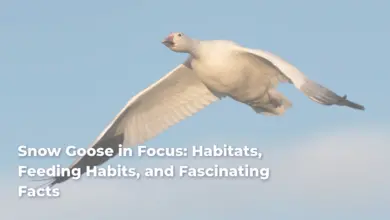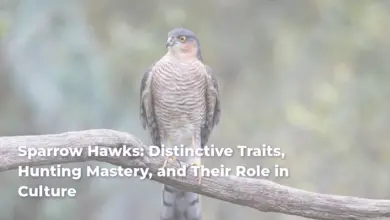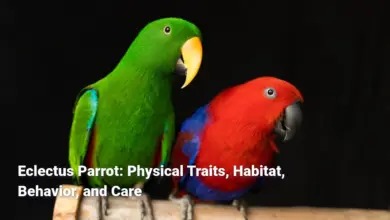Purple Finch Insight: Behavior, Conservation, and Birdwatching Tips
A Comprehensive Guide to Understanding the Purple Finch's Appearance, Behavior, and Conservation
The Purple Finch (Haemorhous purpureus) is a captivating bird known for its distinctive appearance and vibrant plumage. From the moment one catches a glimpse of a male perched high in the trees, they become entranced by its raspberry red hue and charming demeanor. This songbird is not only cherished for its beauty but is also a valuable part of the ecosystem, often seen flitting through gardens, forests, and suburban backyards. With a medium size, robust body, and a wide distribution throughout North America, the Purple Finch stands out as a symbol of nature’s whimsical charm.
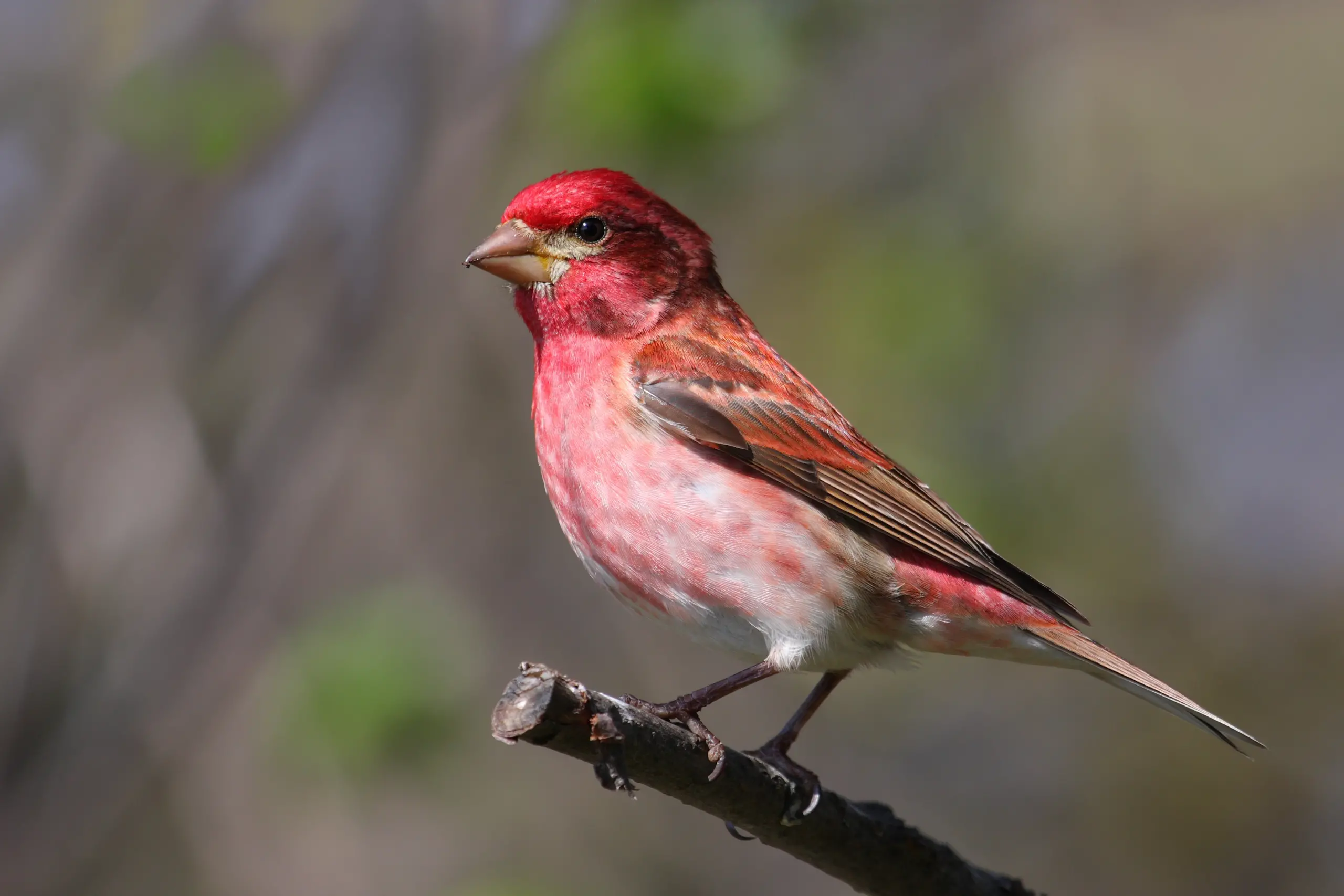
Beyond its aesthetic appeal, the Purple Finch is an intriguing subject of study, especially among birdwatchers, ornithologists, and nature enthusiasts. Understanding its physical characteristics, behaviors, and vocalizations allows us to appreciate more deeply its place in the avian world. This article delves into the various aspects of the Purple Finch, exploring everything from its identification to its conservation status, inviting readers on a journey to learn about this remarkable bird.
Identification and Physical Characteristics of the Purple Finch
The Purple Finch is easily recognizable, thanks to a combination of its size, shape, coloration, and distinct markings. Like nature’s own mosaic, each species has unique features that highlight its place in the environment. The Purple Finch, with its distinction between males and females, serves as an exemplar of beauty and adaptability.
Size and Shape
- Length: The Purple Finch typically measures between 12–16 cm (approximately 4.7–6.3 inches). This petite size makes it one of the smaller finch species.
- Weight: On average, they weigh about 23.3 g (0.82 oz), although individual weights can vary between 19.8 to 28.4 g (0.7 to 1.0 oz).
- Bill: Their conical, seed-eating bill is proportionately larger than that of many sparrows, signifying their primary dietary habits that consist mainly of seeds.
- Tail: With a relatively short and notched tail, the Purple Finch projects a chunkier appearance compared to its relatives.
While the lengths and weights of smaller birds may seem inconsequential, they demonstrate evolution’s handiwork each measurement facilitates survival in their respective habitats.
Coloration and Markings
Differentiating physical traits serve as a spectacle of nature’s palette:
- Males: Adult males are celebrated for their striking raspberry red coloration on the head, breast, and upper parts, embellished with brown streaks across the back. Their color palette is akin to a splash of crimson ink spilled against a canvas of natural green, and they lack distinctive dark stripes often found in other similar finch species, lending them a more uniform appearance.
- Females and Immature Birds: In contrast, female Purple Finches are brown, with light brown upperparts and white underparts, artfully speckled with dark brown streaks. A notable facial design includes a distinct whitish eyebrow and a dark line down the side of the throat, creating a contrast that helps them camouflage within dense foliage.
The differences in coloration between male and female Purple Finches highlight not only their roles in mating and survival but also the artistry endowed by nature, demonstrating how adaptation evolves through aesthetic variations.
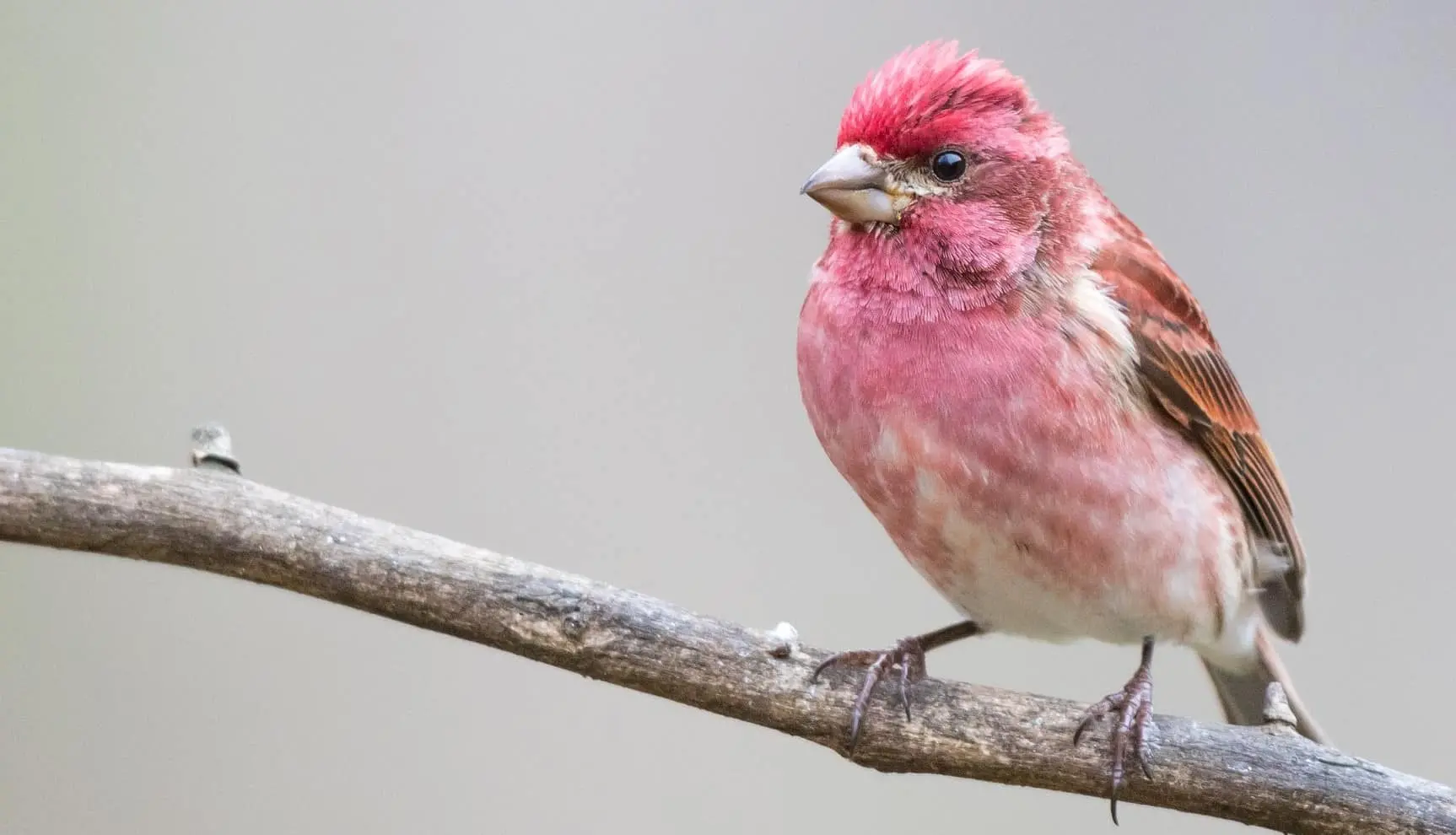
Differences between Males and Females
The Purple Finch showcases a fascinating study in sexual dimorphism, where males and females exhibit marked distinctions in coloration and physical traits. This phenomenon is a poetic representation of nature’s language, posing as both a courtship display and a survival mechanism.
- Male Purple Finch: Males flaunt a flamboyant raspberry hue that persists during the breeding season, attracting females with their striking visual presence. Their robust shape and slightly notched tail further define their silhouette.
- Female Purple Finch: Females, on the other hand, blend seamlessly into the background of their habitat with their muted brown tones, providing crucial camouflage as they tend to their nests. The well-defined streaking patterns aid them in evading predators, showcasing the nuanced balance between attraction and survival.
In essence, the marked differences in coloration and size between male and female Purple Finches represent not only the richness of their species but also the broader narrative of evolution, reproduction, and ecological adaptation. Understanding these distinctions allows birdwatchers and enthusiasts to appreciate their complexity even more deeply.
Habitat and Range of the Purple Finch
The Purple Finch (Haemorhous purpureus) thrives in a variety of habitats across North America, reflecting its adaptability and resourcefulness. From dense coniferous forests to manicured backyards, this bird possesses the remarkable ability to acclimate to its surroundings.
Preferred Environments
Purple Finches typically prefer environments rich in coniferous trees, as these areas provide not only necessary shelter but also a bounty of food sources including seeds, buds, and nectar.
- Breeding Season: During the breeding season, these finches often reside in coniferous and mixed woodlands. They establish nests in dense vegetation or high branches to protect themselves and their young from predators.
- Winter Habitats: In winter months, their habitat expands dramatically into various areas, including backyards, urban settings, and shrubby fields. They frequently visit bird feeders, particularly encountering a variety of seeds that sustain them through colder months.
- Adaptability: This versatility allows Purple Finches to contribute to different ecosystems, showcasing nature’s intricate balance. Their ability to shift locations based on seasonal food availability underlines their resourceful character as they adapt to environmental changes.
Geographic Distribution
Geographically, the breeding range of the Purple Finch extends primarily through northern regions of North America, stretching from parts of Canada, south through the northeastern United States, and even reaching westward towards the Pacific Coast.
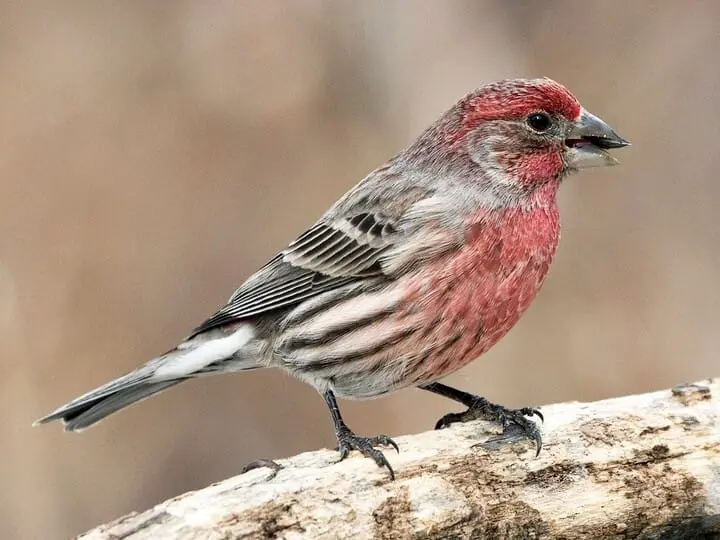
- Winter Movements: As the seasons change, they migrate southward, often appearing in patches across the Midwest, Appalachians, and Southeast regions of the United States. Their movements are erratic, driven largely by food availability, which can lead to remarkable fluctuations in population density from year to year.
The geographic distribution of Purple Finches is not only a testament to their adaptability but also emphasizes the importance of understanding regional patterns to appreciate their behavior during migration and seasonal changes.
Seasonal Migration Patterns
As seasons change, the migratory patterns of Purple Finches reveal their remarkable resilience. They are not tied strictly to fixed routes; instead, they exhibit erratic movements based on environmental conditions and food availability.
- Breeding Season: During spring and summer, breeding occurs predominantly in forested areas where they find suitable nesting locations. Male Purple Finches claim these territories, filling the air with their melodious songs that resonate through the trees.
- Non-Breeding Season: In the fall and winter, Purple Finches spread across broader and diverse habitats, often seeking out gardens, urban neighborhoods, and shrubby fields where bird feeders provide vital sustenance. These movements allow them to thrive, regardless of changing landscapes, showcasing adaptability to both natural and human-altered environments.
This variability in seasonal patterns emphasizes the need for continued monitoring and research to ensure optimal conditions for their survival, as they navigate the complexities of their environments in search of food and shelter.
Behavior and Diet of the Purple Finch
Purple Finches are not merely visual delights; they exhibit captivating behaviors and possess diverse dietary habits that reveal their adaptability in various habitats. Understanding these behaviors provides insight into their roles within ecosystems and their interactions with the environment.
Feeding Habits
The Purple Finch is primarily an omnivore with a diet that consists mainly of seeds, buds, fruits, and some insects.
- Main Food Sources: Their primary diet includes seeds from coniferous trees, soft buds, and a range of flower nectars. Finches enjoy sunflower seeds, especially black-oil sunflower seeds, making bird feeders an inviting stop in gardens and parks. They often forage among trees, shrubs, and the ground to uncover various food sources.
- Seasonal Variations: During the nesting season, Purple Finches increase their protein intake by consuming insects, including aphids and caterpillars feeding behaviors that are vital for the healthy development of their young.
This adaptability in diet enables Purple Finches to thrive in diverse environments, enhancing their ecological role by aiding in seed dispersal and playing a part in local food webs.
Social Behavior
The social dynamics of Purple Finches offer an intricate glimpse into their behavior patterns. They establish social structures that facilitate their interactions with each other, often observed in small flocks that can vary in size depending on the season.
- Monogamous Pairing: During the breeding season, male Purple Finches engage in courtship rituals to attract females, utilizing their striking colors and melodious songs. Each male seeks to establish a territory that serves both as a claim to attract potential mates and a space for nesting.
- Vocal Communication: Communication among flock members is vital. Purple Finches utilize a range of calls and songs to relay information to one another, whether it’s to maintain contact, express alarm in the presence of threats, or establish a social hierarchy. These vocalizations create a harmonious atmosphere in their habitats, making their behavior not just functional but also a melodious part of the environment.
Nesting and Breeding
Nesting practices of the Purple Finch are essential for ensuring the survival of their offspring. The female assumes primary responsibility for building the nest, which is typically located in dense tree foliage.
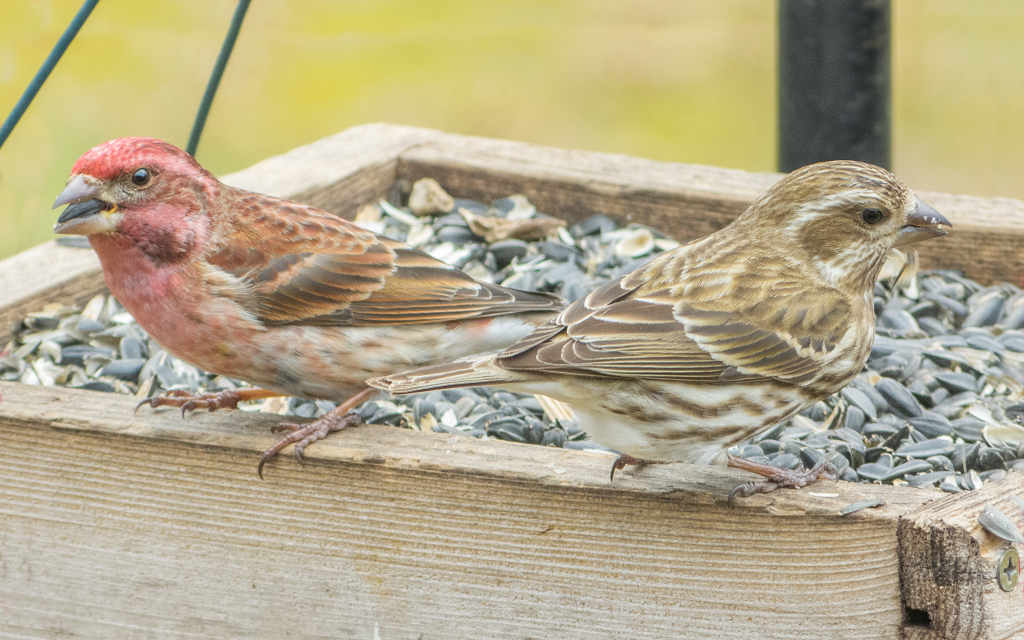
- Nesting Sites: Depending on their surroundings, nests may be built in the forks of branches of coniferous trees, at heights ranging from 5 to 60 feet. This elevation serves dual purposes: it provides a level of security from ground-dwelling predators and enhances visibility for the parent birds.
- Nest Construction: The nest itself is a shallow cup composed of twigs, grasses, and rootlets all lined with softer materials such as animal fur and feathers. Crafting these nests takes about 3 to 8 days, with females selecting materials methodically to create a safe and comfortable environment for their young.
Understanding these nesting behaviors not only demonstrates the intricate planning involved but also emphasizes the vital role that habitat selection and material gathering play in supporting the next generation of Purple Finches.
Vocalizations of the Purple Finch
Vocalizations are significant aspects of the Purple Finch’s behavior, serving various purposes connected to communication, mating, and territory defense.
Types of Calls
- Songs: Male Purple Finches produce melodious and complex songs during the breeding season, serving primarily to establish territorial boundaries and attract potential mates. Their songs comprise sweet, trilled phrases that can be reminiscent of both sparrows and canaries, creating a distinctive auditory landscape.
- Contact Calls: Beyond singing, Purple Finches emit a variety of calls that convey different messages within their social structure. Contact calls maintain connections between mated pairs and flock members, ensuring group cohesion during foraging excursions.
- Alarm Calls: Alarm calls act as urgent notifications sent in response to perceived threats, alerting others to potential danger. This vocal behavior reflects their ability to communicate effectively in varying contexts, a skill essential for survival.
Purpose of Vocalizations
Vocal behaviors in Purple Finches serve multifaceted purposes, providing insights into their social dynamics and ecological roles.
- Territorial Defense: The songs of male Purple Finches play an integral role in claiming and defending territory. Strong and melodic calls signal potential rivals to steer clear, while also marking the presence of an established male during mating seasons.
- Courtship Rituals: Vocalizations become a significant component of courtship displays, providing crucial indicators of a male’s health, strength, and genetic quality. Females often select mates based on the complexity and quality of their songs.
- Communication and Socialization: Simple calls maintain social bonds and alert flock members about food sources or impending dangers. Subtle variations in these calls can signal specific messages, showcasing an impressive level of communication within the species.
By understanding the nuances of Purple Finch vocalizations, observers gain appreciation for both their social interactions and the ways in which they engage with their habitat, contributing further to the dynamics of local ecosystems.
Conservation Status of the Purple Finch
The conservation status of the Purple Finch is classified as “Least Concern” by the International Union for Conservation of Nature (IUCN), signifying that, on a global scale, the species does not face immediate risks of extinction. However, this classification belies the complexities surrounding regional trends and population stability.
Population Trends
While the global estimate stands at approximately 5.9 million individuals, certain regions have reported declines in population numbers. For instance:
- In New Hampshire, populations are described as experiencing significant reductions, largely due to competition with introduced species like the House Finch.
- Irregular migration patterns may stem from food availability, especially in years when conifer seed crops diminish, leading to cyclical population fluctuations.
Keeping tabs on these trends is critical for ensuring that management efforts can be tailored to address specific regional needs.
Threats to Habitat
Various factors contribute to the declining or fluctuating trends of Purple Finch populations:
- Competition from House Finches: The introduction of House Finches across North America has led to heightened competition for resources. Studies indicate that House Finches outperform Purple Finches in up to 95% of recorded interactions, leading to increased pressure on the latter during feeding periods.
- Habitat Loss: Urban development has dramatically impacted available habitats for Purple Finches. As conifer forests diminish through logging and urban encroachment, suitable nesting and foraging sites become sparse.
- Food Supply Variability: Seasonal fluctuations in food availability can significantly affect survival and breeding success. The reliance on cyclical seed supplies from coniferous trees underscores the need for comprehensive habitat protection and understanding the ecological dynamics at play.
- Predation and Outdoor Cats: Predation remains a significant threat to Purple Finches, and outdoor domestic cats contribute substantially to mortality rates. Awareness campaigns aimed at reducing outdoor cat populations may help mitigate this issue.
Conservation Efforts
Recognizing the threats faced by Purple Finches, various conservation organizations and initiatives have prioritized their protection:
- Habitat Preservation: Protecting remaining habitats and promoting the restoration of native tree species, particularly conifers, remains a key strategy for sustaining Purple Finch populations.
- Public Education: Educational efforts focus on increasing awareness about the impact of competing species and the importance of creating urban environments that support diverse bird populations, including the Purple Finch.
- Monitoring Programs: Active population monitoring allows wildlife agencies to track trends and tailor conservation strategies to effectively respond to changing dynamics within Purple Finch communities.
Addressing these multi-faceted challenges requires collaboration between conservationists, land managers, and communities, driving initiatives that prioritize the sustainability of the Purple Finch and its habitats.
Interesting Facts About the Purple Finch
The Purple Finch is rich with fascinating traits and behaviors, which highlight its unique place within the avian world.
- Irruptive Migration: The Purple Finch exhibits erratic migration patterns, often causing large fluctuations in their numbers based on annual food availability. Years with poor conifer seed crops lead to irruptions that bring these birds to surprising locations.
- Sexual Dimorphism: Males showcase dazzling raspberry-red plumage, while females are humble in their streaky brown appearance. This stark contrast serves as a vivid reminder of nature’s artistry.
- Dietary Preferences: Though seeds dominate their diet, Purple Finches are opportunistic feeders. They delight in fruits, nectar, and even small insects during the nesting season, showcasing their adaptability in seeking nutrition.
- Nesting Behavior: The female Purple Finch builds elaborate nests from twigs and grasses, often utilizing high tree branches an adaptation that reinforces the importance of strategic nest placement in evading predators.
These intriguing facts express not just the character of the Purple Finch but also highlight the importance of ongoing efforts to study and protect this charming bird, ensuring its place in North America’s diverse ecosystems.
Unique Behaviors or Adaptations of the Purple Finch
The Purple Finch showcases a range of unique behaviors and adaptations that distinguish it from other finches and contribute to its survival in diverse environments.
- Vocal Mimicry: Male Purple Finches possess an impressive ability to mimic the calls and songs of other bird species. This vocal mimicry not only enhances their appeal during courtship but also serves as a deterrent against potential rivals, adding a layer of complexity to their interactions.
- Aggressive Territoriality: During the breeding season, males can display aggressive behaviors to defend their territories against intruders. They engage in posturing, puffing up their feathers, and producing alarm calls to signal their readiness to confront rivals.
- Foraging Strategies: Their strong, conical bills are particularly suited for cracking open seeds, allowing Purple Finches to exploit various food sources. They can also pierce flowers to access nectar without harming the entire bloom, showcasing their resourcefulness.
- Nesting Strategy: The choice of high locations for their nests reflects an adaptation for safety against ground predators. Nest design, tailored from natural materials gathered from their surroundings, emphasizes their resilience and ability to thrive in varying conditions.
These unique behaviors and adaptations not only highlight the Purple Finch’s remarkable evolutionary strategies but also its relevance in ecological communities as both foragers and songbirds.
Cultural Significance or Symbolism of the Purple Finch
The Purple Finch holds a unique place within cultural narratives and local symbolism, reflecting its importance in human perceptions of nature.
- State Bird of New Hampshire: The Purple Finch serves as the official state bird of New Hampshire, adopted in the early 1900s. Its striking colors and melodic songs symbolize the state’s vibrant natural heritage, emphasizing the importance of preserving local wildlife.
- Symbolism of Joy and Positivity: Across various cultures, finches are often seen as symbols of happiness, joy, and positive energy. The Purple Finch, with its radiant plumage, embodies these themes, resonating deeply with those who appreciate the connection between nature and emotional well-being.
- Literary and Artistic Representation: The captivating colors and behaviors of the Purple Finch inspire artists and writers, and it frequently finds representation in literature and wildlife art. Its charm enhances cultural narratives that celebrate the beauty of nature.
- Conservation Advocacy: As interest in birdwatching and conservation grows, the Purple Finch serves as a compelling ambassador for avian protection efforts. Its struggles and successes in adapting to changing environments inspire advocacy work toward habitat conservation and biodiversity.
These cultural significances highlight how the Purple Finch resonates beyond mere biological facts, contributing to the rich tapestry of human experiences and natural interactions.
Resources for Birdwatchers of the Purple Finch
For those captivated by the charm of the Purple Finch, there are numerous resources available to facilitate birdwatching, identification, and conservation efforts.
- Cornell Lab of Ornithology – All About Birds: A comprehensive online guide that provides in-depth information about Purple Finches, including their behavior, habitat, vocalizations, and identification tips.
- Audubon Field Guide: Offers a visual and written resource detailing the Purple Finch’s plumage variations, nesting habits, and dietary preferences, crucial for understanding this species.
- Birdzilla: A go-to website for factual information, facilitating the identification of the Purple Finch through photographs and descriptions of its size and behavior.
- eBird: A citizen science platform where birdwatchers can document their sightings, explore migration patterns, and gather information on regional Purple Finch populations.
- Merlin Bird ID: An app that assists birdwatchers in identifying species based on appearance and location. It’s an accessible tool for on-the-go identification of the Purple Finch and its relatives.
These resources provide valuable access to information, fostering appreciation and understanding of the Purple Finch while supporting the broader mission of avian conservation.
Birdwatching Tips
For those eager to observe the Purple Finch in its natural habitat, a few effective strategies can enhance the experience. Here are some tips to increase your chances of spotting this enchanting bird:
- Best Time for Observation: Early mornings and late afternoons are ideal times to observe Purple Finches, as they are most active during these periods, especially when foraging for food.
- Location Selection: Seek out wooded areas, parks, and gardens that contain coniferous trees. Setting up near bird feeders can significantly increase your chances of witnessing these finches.
- Use Binoculars: Invest in a good pair of binoculars to get up close in a non-invasive way. This will help you observe their distinct coloration and markings without disturbing them.
- Become Familiar with Vocalizations: Listening for their melodious songs and calls can aid in locating them. Familiarizing yourself with their various vocalizations enhances your ability to spot and recognize Purple Finches.
- Patience and Quiet: Be patient and minimize noise. Birds are skittish, and giving them time to reappear can lead to a rewarding experience.
By applying these tips, birdwatchers can immerse themselves in the joy of observing the Purple Finch and deepen their appreciation for avian life.
Recommended Identification Guides
Birdwatchers looking for the perfect identification guides to help distinguish the Purple Finch can utilize several reputable resources. Here’s a list of some of the most effective guides available:
- Sibley Field Guide to Birds of North America: Renowned for its detailed illustrations and comprehensive descriptions, this guide provides essential information for identifying the Purple Finch amid various species.
- Peterson Field Guide to Birds of North America: This classic field guide includes valuable insights into plumage variations, breeding behaviors, and seasonal changes pertinent to the Purple Finch.
- National Geographic Field Guide to Birds of North America: Combining photographs with entertaining facts, this guide serves as both an entertaining and educational resource for enthusiastic birdwatchers.
- Birdwatching for Dummies: This accessible guide covers basic identification strategies, making it suitable for beginners eager to learn about various species, including the Purple Finch.
- iBird Pro Guide to Birds: Available as an app, the iBird Pro Guide includes features such as range maps, calls, and detailed descriptions facilitating easy identification of the Purple Finch and other birds.
These guides enhance the experience of birdwatching by empowering enthusiasts with knowledge and practical tools to identify and appreciate the Purple Finch during their encounters in nature.
Online Resources and Communities
For bird enthusiasts eager to deepen their knowledge and share their experiences, several online resources and communities cater to this passion:
- eBird: This platform allows birdwatchers to document their sightings, share experiences, and access valuable data about the Purple Finch’s presence in various locations. Community-driven, eBird fosters connections between users worldwide.
- BirdForum: A global online community for birdwatchers, BirdForum provides a place for enthusiasts to discuss all aspects of birding, including the Purple Finch. Users can share photos, tips, and information about recent sightings.
- Facebook Groups: Several Facebook groups focus specifically on birdwatching or specific species, allowing enthusiasts to connect, share tips, and ask questions related to the Purple Finch and other birds.
- Reddit – r/birding: An active platform for amateur and experienced birdwatchers alike, users share their experiences, photographs, and identification challenges while discussing pertinent topics related to birds like the Purple Finch.
- Local Birding Clubs and Audubon Societies: Joining local birding clubs or Audubon Society chapters fosters a sense of community. These organizations often host field trips, educational outings, and conservation initiatives focused on species like the Purple Finch.
Participating in these online resources and communities allows birdwatchers to connect with like-minded individuals, gaining knowledge and appreciation for the Purple Finch while supporting conservation efforts.
Conclusion
The Purple Finch (Haemorhous purpureus) embodies the beauty and complexity of nature, from its stunning coloration and intricate behaviors to its cultural symbolism and ecological significance. As we glean insights from its life its habitat preferences, eating habits, social structures, and conservation challenges we unlock a deeper understanding of the delicate balance that sustains avian life. Appreciating the Purple Finch not only enriches our experience in the natural world but also highlights the importance of conservation efforts to preserve the habitats and ecosystems that allow these charming creatures to thrive.





